Old West Surrey: Some Notes and Memories (first published 1904)
Gertrude Jekyll (1999, The History Press Ltd)
Recommended by Hattie Walters
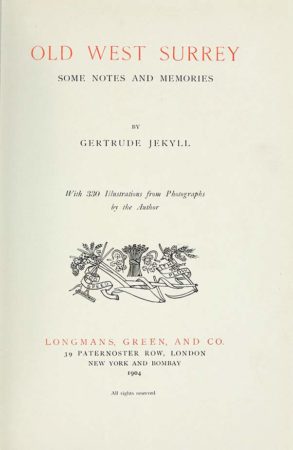 Unlike Gertrude Jekyll’s numerous other “garden books”, which are predominately dedicated to the planning and maintenance of a garden over the year, Old West Surrey was intended to memorialise the elements of rural working-class life that she saw rapidly disappearing from her beloved late nineteenth-century stomping-grounds. Roving from the architectural features of specific properties to characters remembered from childhood church sermons, fragments of dialect, dress, custom, and house ornament; and peppered with her own photographs and illustrations, Jekyll’s text is devoted to recording her impressions of local culture, used to promote her own Arts and Crafts sensitivity to place. This work is an important example of the twentieth-century reclamation of the distinctiveness of local village life, and Jekyll’s prime concern is the countryside included in her personal definition of Old West Surrey.
Unlike Gertrude Jekyll’s numerous other “garden books”, which are predominately dedicated to the planning and maintenance of a garden over the year, Old West Surrey was intended to memorialise the elements of rural working-class life that she saw rapidly disappearing from her beloved late nineteenth-century stomping-grounds. Roving from the architectural features of specific properties to characters remembered from childhood church sermons, fragments of dialect, dress, custom, and house ornament; and peppered with her own photographs and illustrations, Jekyll’s text is devoted to recording her impressions of local culture, used to promote her own Arts and Crafts sensitivity to place. This work is an important example of the twentieth-century reclamation of the distinctiveness of local village life, and Jekyll’s prime concern is the countryside included in her personal definition of Old West Surrey.
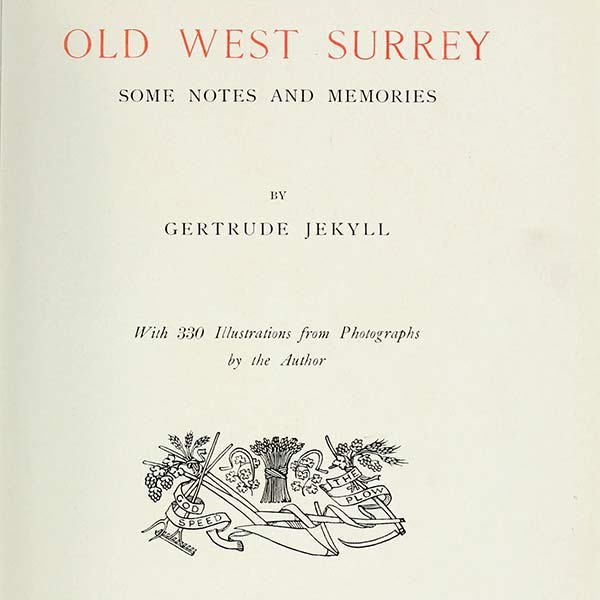
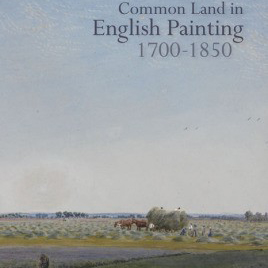
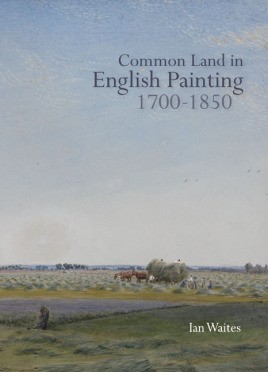 Examining how artists such as Peter DeWint and John Constable depicted common land during the eighteenth and nineteenth centuries, Waites sketches a picture of a little-known, unenclosed landscape from England’s past. While enclosures had been impacting the countryside since the fifteenth century, this book charts a period of fast-paced parliamentary enclosure activity in the eighteenth and nineteenth centuries which transformed many remaining common field systems. Waites examines cultural artistic developments, such as the Picturesque, Naturalism and rural nostalgia, alongside socioeconomic debates surrounding parliamentary enclosures, including ideologies of improvement and the independence of the commoner. Studying the landscape art, literature and contemporary commentary of the period c.1700-1850, this book makes a strong case for the importance of common land in English landscape painting, wider culture and history.
Examining how artists such as Peter DeWint and John Constable depicted common land during the eighteenth and nineteenth centuries, Waites sketches a picture of a little-known, unenclosed landscape from England’s past. While enclosures had been impacting the countryside since the fifteenth century, this book charts a period of fast-paced parliamentary enclosure activity in the eighteenth and nineteenth centuries which transformed many remaining common field systems. Waites examines cultural artistic developments, such as the Picturesque, Naturalism and rural nostalgia, alongside socioeconomic debates surrounding parliamentary enclosures, including ideologies of improvement and the independence of the commoner. Studying the landscape art, literature and contemporary commentary of the period c.1700-1850, this book makes a strong case for the importance of common land in English landscape painting, wider culture and history.

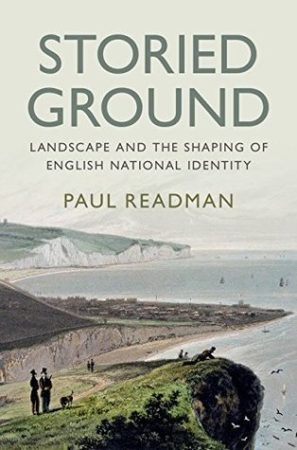 From the cliffs of Dover to the industrial city of Manchester, Readman highlights the significance of connections between landscape and heritage in the construction of a modern, popular form of English national identity. This work explores how landscapes are ‘storied’ with countless human histories and memories bound up with place. Through the history, literature and art of the late eighteenth to the early twentieth centuries, Storied Ground traces a varied and widespread engagement with landscapes in English culture. Expanding a marginal, conservative and anti-modern understanding of rural Englishness, Readman demonstrates how a ‘topography’ of English national identity accommodated industrial landscapes and diverse political perspectives in a rapidly urbanising and democratising modern Britain.
From the cliffs of Dover to the industrial city of Manchester, Readman highlights the significance of connections between landscape and heritage in the construction of a modern, popular form of English national identity. This work explores how landscapes are ‘storied’ with countless human histories and memories bound up with place. Through the history, literature and art of the late eighteenth to the early twentieth centuries, Storied Ground traces a varied and widespread engagement with landscapes in English culture. Expanding a marginal, conservative and anti-modern understanding of rural Englishness, Readman demonstrates how a ‘topography’ of English national identity accommodated industrial landscapes and diverse political perspectives in a rapidly urbanising and democratising modern Britain.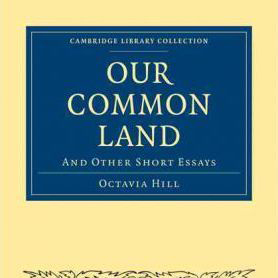
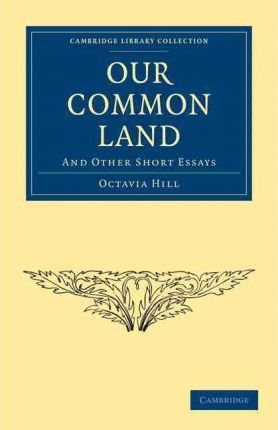 Octavia Hill was a housing reformer, active campaigner for open space preservation, and co-founder of the National Trust. This collection of Hill’s public-facing lectures and articles covers topics ranging from her principles on charity to commons preservation, largely stemming from her housing work in London’s poor neighbourhoods. In her papers on open spaces, Hill described how paths and commons were being closed to the public, just as people increasingly depended on open space in the context of a rising urban population. The collection captures a crucial period in the history of public access to green spaces, and can be read in the context of a broader open space preservation movement which led to the establishment of the National Trust in 1895.
Octavia Hill was a housing reformer, active campaigner for open space preservation, and co-founder of the National Trust. This collection of Hill’s public-facing lectures and articles covers topics ranging from her principles on charity to commons preservation, largely stemming from her housing work in London’s poor neighbourhoods. In her papers on open spaces, Hill described how paths and commons were being closed to the public, just as people increasingly depended on open space in the context of a rising urban population. The collection captures a crucial period in the history of public access to green spaces, and can be read in the context of a broader open space preservation movement which led to the establishment of the National Trust in 1895.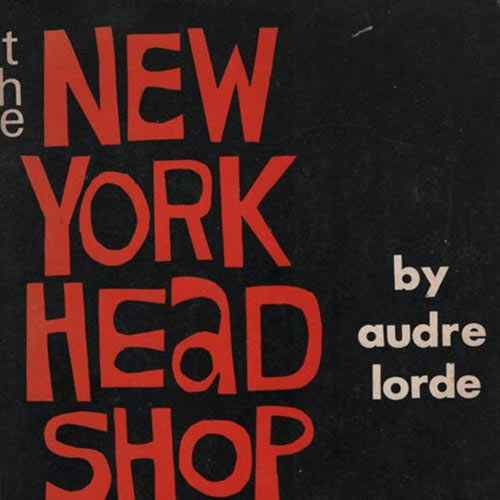
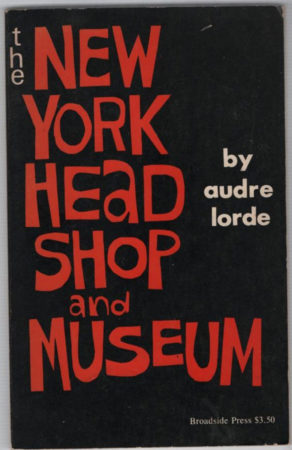 Sara Ahmed observes that Lorde’s writing is ‘personal testimony as well as political speech’ and that she ‘made life itself a political art, an art which you must craft from the resources that you have available’. One of her most crucial resources was New York, the place where she was born and where she lived for significant periods of time. Her 1975 collection New York Head Shop and Museum (now out of print but available as part of her Collected Poems), is both a portrait of the city as it slid into dereliction in the 1970s and a metaphorical act of taking to the streets in order to reclaim space and assert the existence of the marginalised. A glance at the contents list indicates the extent of New York’s critical role in the collection –titles include ‘New York City 1970’, ‘To Desi as Joe as Smoky the Lover of 115th Street’, ‘A Sewerplant Grows in Harlem’, ‘A Birthday Memorial to Seventh Street’, ‘A Year to Life on the Grand Central Shuttle’, ‘A Trip on the Staten Island Ferry’ and ‘Memorial III from a Phone Booth on Broadway’. The poems themselves are filled with references to a wide range of identifiable places all over New York, including the subway, the Staten Island Ferry, East Side Drive, Wall Street, Fourteenth Street, Riverside Drive, Brighton Beach Brooklyn and 125th Street and Lenox. The city that emerges from New York Head Shop is overwhelmingly deficient but richly lived, containing occurrences of horror, heartbreak and sometimes happiness.
Sara Ahmed observes that Lorde’s writing is ‘personal testimony as well as political speech’ and that she ‘made life itself a political art, an art which you must craft from the resources that you have available’. One of her most crucial resources was New York, the place where she was born and where she lived for significant periods of time. Her 1975 collection New York Head Shop and Museum (now out of print but available as part of her Collected Poems), is both a portrait of the city as it slid into dereliction in the 1970s and a metaphorical act of taking to the streets in order to reclaim space and assert the existence of the marginalised. A glance at the contents list indicates the extent of New York’s critical role in the collection –titles include ‘New York City 1970’, ‘To Desi as Joe as Smoky the Lover of 115th Street’, ‘A Sewerplant Grows in Harlem’, ‘A Birthday Memorial to Seventh Street’, ‘A Year to Life on the Grand Central Shuttle’, ‘A Trip on the Staten Island Ferry’ and ‘Memorial III from a Phone Booth on Broadway’. The poems themselves are filled with references to a wide range of identifiable places all over New York, including the subway, the Staten Island Ferry, East Side Drive, Wall Street, Fourteenth Street, Riverside Drive, Brighton Beach Brooklyn and 125th Street and Lenox. The city that emerges from New York Head Shop is overwhelmingly deficient but richly lived, containing occurrences of horror, heartbreak and sometimes happiness.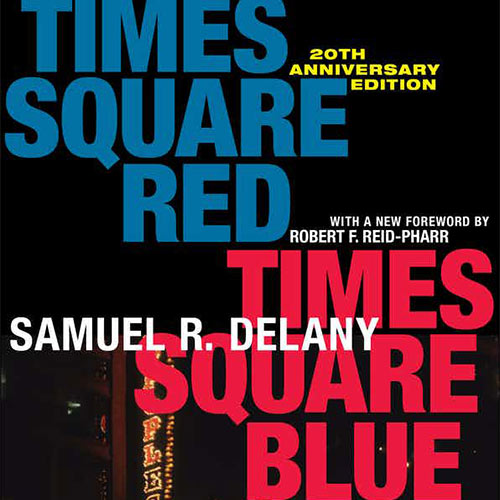
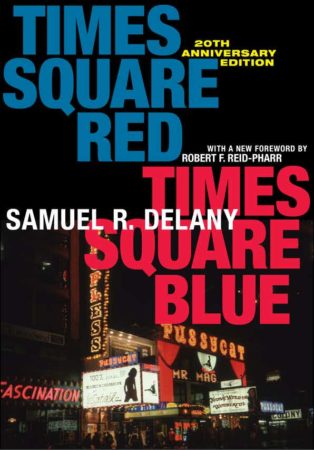 Times Square Red, Times Square Blue provocatively explores the redevelopment of New York City’s 42nd Street, or the Deuce, since the start of the 1960s – ‘a violent reconfiguration’ of the landscape of the city. The book consists of two extended essays, each moving ‘along different trajectories and at different intensities … two attempts by a single navigator to describe what the temporal coastline and the lay of the land looked like and felt like and the thoughts he had while observing them’. Delany playfully but instructively tracks the shift of one of the world’s most famous urban places – Times Square – from a locale hinging on pornography and public sex to one structured around tourism, ‘family values and safety’. In evoking and mourning the disappearance of the old Times Square, Delany illuminates the complex social relationships that developed there and were subsequently lost, exploring the pleasure and importance of communication across classes and in public spaces, and the crucial differences between institutionally-engineered networking (which tends to take place indoors) and contact, which is associated with public space and is more broadly social and random.
Times Square Red, Times Square Blue provocatively explores the redevelopment of New York City’s 42nd Street, or the Deuce, since the start of the 1960s – ‘a violent reconfiguration’ of the landscape of the city. The book consists of two extended essays, each moving ‘along different trajectories and at different intensities … two attempts by a single navigator to describe what the temporal coastline and the lay of the land looked like and felt like and the thoughts he had while observing them’. Delany playfully but instructively tracks the shift of one of the world’s most famous urban places – Times Square – from a locale hinging on pornography and public sex to one structured around tourism, ‘family values and safety’. In evoking and mourning the disappearance of the old Times Square, Delany illuminates the complex social relationships that developed there and were subsequently lost, exploring the pleasure and importance of communication across classes and in public spaces, and the crucial differences between institutionally-engineered networking (which tends to take place indoors) and contact, which is associated with public space and is more broadly social and random.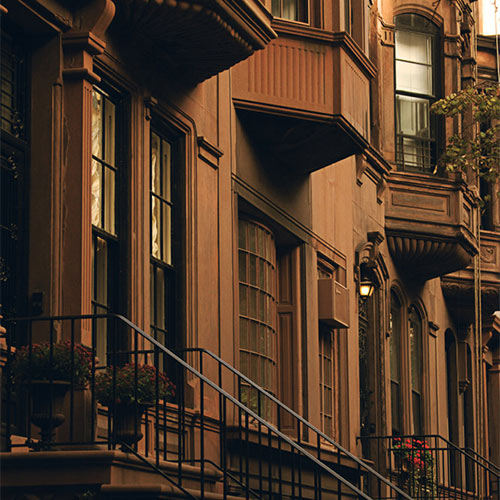
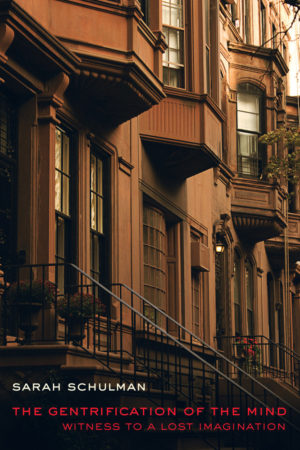 This is a queer book – one that refuses the well-worn and instantly recognizable structure of academic books, that doesn’t follow the storyline academic books are supposed to follow. As Schulman writes in her introduction, ‘some ideas have to be formally replicated, instead of being described. They have to be evoked.’ The Gentrification of the Mind is a memoir and analysis of the years during the AIDS crisis during which Schulman witnessed the disappearance of the New York she knew and loved, with the spectre of AIDS moving hand-in-hand with gentrification and mainstream consumerism. It laments lost places and lost people (‘destroyed neighborhoods remain destroyed’) but it is also a celebration of difference and futurity, of using activism and the arts to reclaim those lost places: ‘in order for radical queer culture to thrive, there must be diverse, dynamic cities in which we can hide/flaunt/learn/influence – in which there is room for variation and discovery’.
This is a queer book – one that refuses the well-worn and instantly recognizable structure of academic books, that doesn’t follow the storyline academic books are supposed to follow. As Schulman writes in her introduction, ‘some ideas have to be formally replicated, instead of being described. They have to be evoked.’ The Gentrification of the Mind is a memoir and analysis of the years during the AIDS crisis during which Schulman witnessed the disappearance of the New York she knew and loved, with the spectre of AIDS moving hand-in-hand with gentrification and mainstream consumerism. It laments lost places and lost people (‘destroyed neighborhoods remain destroyed’) but it is also a celebration of difference and futurity, of using activism and the arts to reclaim those lost places: ‘in order for radical queer culture to thrive, there must be diverse, dynamic cities in which we can hide/flaunt/learn/influence – in which there is room for variation and discovery’.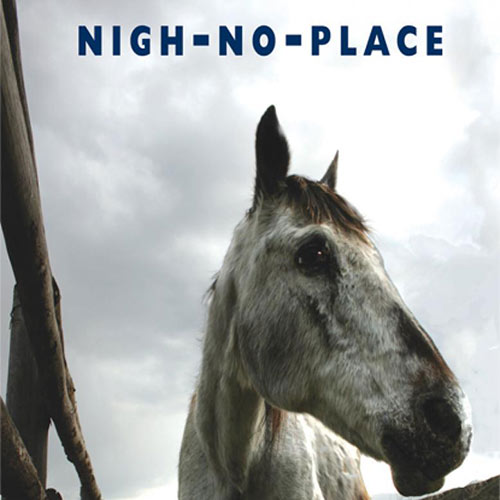
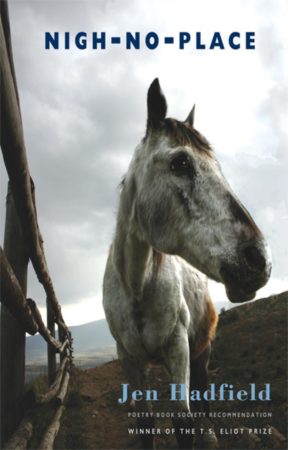 As in all of Jen Hadfield’s poetry collections, Nigh-No-Place explores the Shetland landscape in an intimate and yet estranging manner. Her eye for detail and ear for sound brings us the more curious and overlooked parts of the landscape. Inventive and often curious images lead the writing, as well as her sensitive use of the Shetland dialect. My favourite poem is ‘Daed-traa’ (a Shetland word used for ‘the slack of the tide’) that is an extraordinary feat of mixed metaphor in which a manifesto for poetry is entangled within the landscape itself and its inhabiting creatures: ‘I go to the rockpool at the slack of the tide / to mind me what my poetry’s for… It has its Little Shop of Horrors. / It has its crossed and dotted monsters’.
As in all of Jen Hadfield’s poetry collections, Nigh-No-Place explores the Shetland landscape in an intimate and yet estranging manner. Her eye for detail and ear for sound brings us the more curious and overlooked parts of the landscape. Inventive and often curious images lead the writing, as well as her sensitive use of the Shetland dialect. My favourite poem is ‘Daed-traa’ (a Shetland word used for ‘the slack of the tide’) that is an extraordinary feat of mixed metaphor in which a manifesto for poetry is entangled within the landscape itself and its inhabiting creatures: ‘I go to the rockpool at the slack of the tide / to mind me what my poetry’s for… It has its Little Shop of Horrors. / It has its crossed and dotted monsters’.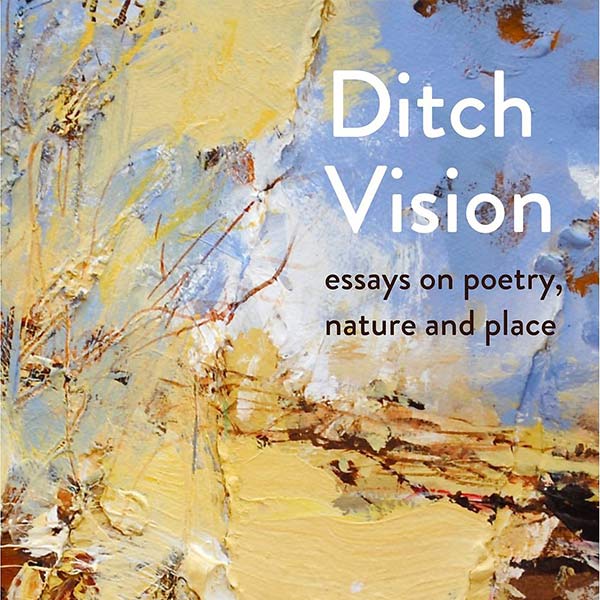
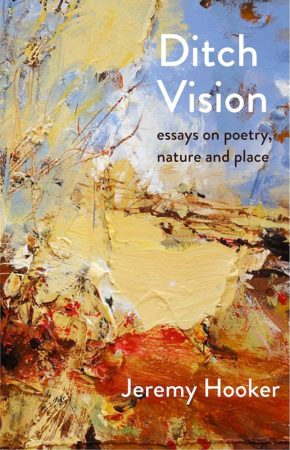 This book provides a useful way to conceptualise the differing scales of British and American landscapes in the context of nature writing from the nineteenth century to the twentieth century. Hooker suggests that many British writers demonstrate ‘ditch vision’ in their portrayals of environments. Rather than grand expanses, this approach studies microcosms of the wild in landscapes otherwise deemed increasingly urban. Hooker takes his lead from Richard Jefferies who in ‘The Pageant of Summer’ finds a ditch overflowing with ‘Green rushes, long and thick … the white pollen of early grasses … hawthorn boughs … briars … buds’ ([1884] 2011: 41–2). The observation leads him to remark, ‘So much greater is this green and common rush than all the Alps’ (ibid.: 43). Hooker applies his concept of ‘ditch vision’ to writers including Edward Thomas, John Cowper Powys and Frances Bellerby.
This book provides a useful way to conceptualise the differing scales of British and American landscapes in the context of nature writing from the nineteenth century to the twentieth century. Hooker suggests that many British writers demonstrate ‘ditch vision’ in their portrayals of environments. Rather than grand expanses, this approach studies microcosms of the wild in landscapes otherwise deemed increasingly urban. Hooker takes his lead from Richard Jefferies who in ‘The Pageant of Summer’ finds a ditch overflowing with ‘Green rushes, long and thick … the white pollen of early grasses … hawthorn boughs … briars … buds’ ([1884] 2011: 41–2). The observation leads him to remark, ‘So much greater is this green and common rush than all the Alps’ (ibid.: 43). Hooker applies his concept of ‘ditch vision’ to writers including Edward Thomas, John Cowper Powys and Frances Bellerby.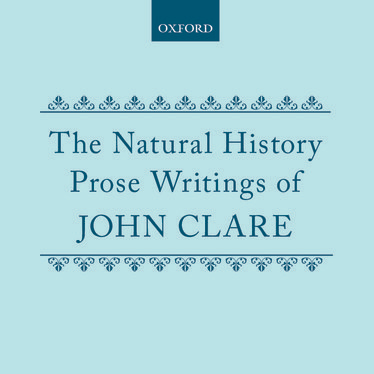
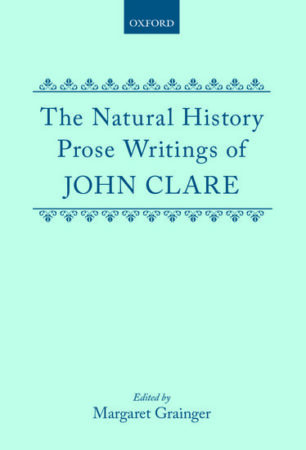 With a couple of exceptions, Clare spent the first thirty-nine years of his life in one place: Helpston, ‘a gloomy village in Northamptonshire, on the brink of the Lincolnshire fens’, as he writes in his ‘Sketches of the Life of John Clare’ (John Clare by Himself), a ‘slip between two shores’, a place ‘not poetical enough’ for turtle doves as he describes it elsewhere (Natural History Prose). Sometimes, I’m not entirely convinced that Clare loved his native place for its own placeness. What the prose brings home to me is the particularity of Clare’s places: he’s a lover of ‘spots’ and ‘nooks’, this particular tree, these birds of this wood. The place names and place-specific natural history details of his prose are familiar from his poems – Swordy Well, Royce Wood, Langley Bush, nightingales, ferns, shells and orchids – and moments in the prose often recall those of his poems. As well as revealing further his skill as a fieldwork naturalist (his incomplete ‘Natural History of Helpstone’ written on the model of Gilbert White), the prose extends our insight into Clare’s poetic life: how he came to poetry and what poems he read, how and where he came to write his own, and what he also refers to as his ‘poetical’ feeling (the autobiographical fragment ‘Leisure’ is a particular treat in this regard), embedded in place and bound up with what Clare invariably describes as ‘love’.
With a couple of exceptions, Clare spent the first thirty-nine years of his life in one place: Helpston, ‘a gloomy village in Northamptonshire, on the brink of the Lincolnshire fens’, as he writes in his ‘Sketches of the Life of John Clare’ (John Clare by Himself), a ‘slip between two shores’, a place ‘not poetical enough’ for turtle doves as he describes it elsewhere (Natural History Prose). Sometimes, I’m not entirely convinced that Clare loved his native place for its own placeness. What the prose brings home to me is the particularity of Clare’s places: he’s a lover of ‘spots’ and ‘nooks’, this particular tree, these birds of this wood. The place names and place-specific natural history details of his prose are familiar from his poems – Swordy Well, Royce Wood, Langley Bush, nightingales, ferns, shells and orchids – and moments in the prose often recall those of his poems. As well as revealing further his skill as a fieldwork naturalist (his incomplete ‘Natural History of Helpstone’ written on the model of Gilbert White), the prose extends our insight into Clare’s poetic life: how he came to poetry and what poems he read, how and where he came to write his own, and what he also refers to as his ‘poetical’ feeling (the autobiographical fragment ‘Leisure’ is a particular treat in this regard), embedded in place and bound up with what Clare invariably describes as ‘love’.